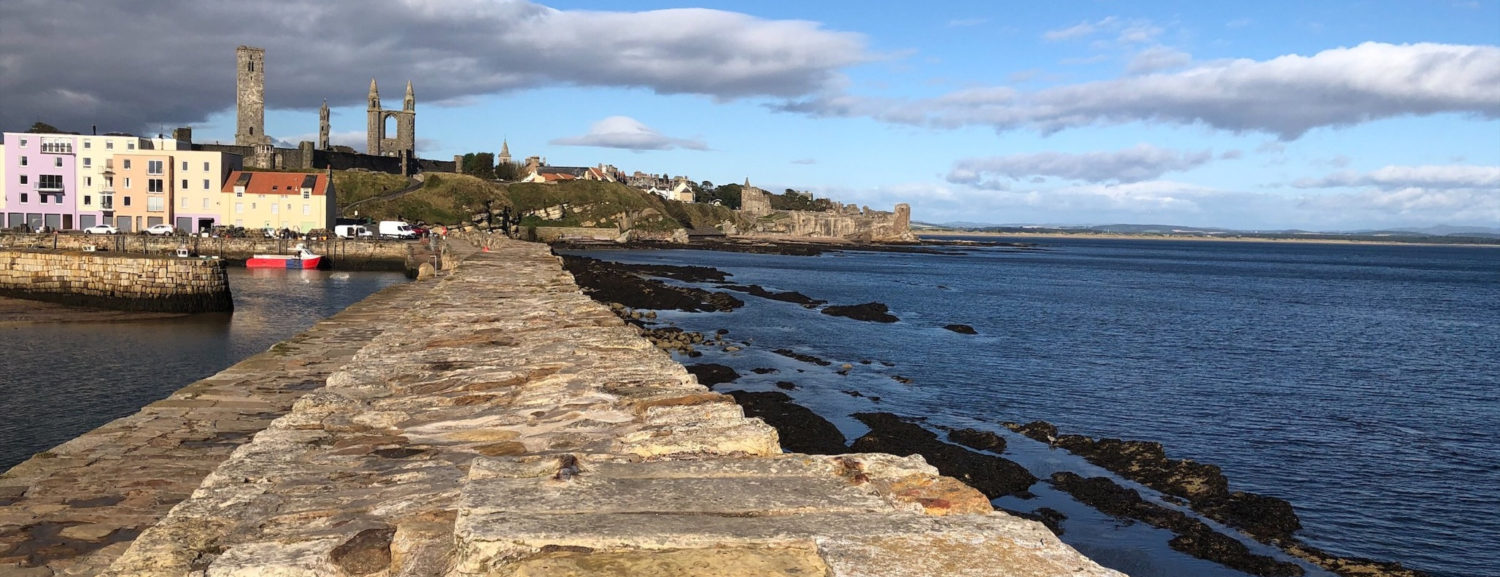St Andrews Botanic Gardens, founded by University of St Andrews in 1889 for botanical education and research purposes, with Dr. John Hardie Wilson as the principal founder, is the third oldest established Botanic Garden in Scotland (after Edinburgh and Glasgow). Originally within the grounds of St. Mary’s College near the Bute Medical School, the Gardens moved to the current location in 1962, on the banks of the sylvan Kinness Burn, in the Canongate area of St Andrews. The present Botanic Garden is an 18-acre site managed by the St Andrews Botanic Gardens Trust. It contains over 8000 species of plants and borders specialising in Chinese and Chilean flora. It also holds significant collections of Cotoneaster, Berberis and Sorbus. Moreover, the garden houses an algal herbarium based on the significant collection of a wide variety of seaweed specimens originally by the phycologist Margaret Gatty (1809-1873), with in total over 8825 specimens and 500 plates currently existing in the herbarium.
There is currently an ongoing research project, named St Andrews Nestboxes being conducted in the garden, which studies how environmental temperature and previous experience affect the blue tits’ nest-building process, and the link between nest morphology and the individual breeding success. Nest boxes with the university logo for the project can be found across the garden. And if you are lucky, you may find signs of some lovely research objects – blue tits with colour rings on legs as well!
The core founder, John Hardie Wilson (1858-1920), at the time in 1889 was responsible for supplying and planting out the garden. In his earlier life, after studying at the Madras College in St Andrews, Wilson worked as a plantsman at the Royal Botanic Gardens in Edinburgh for two years and began his study in Botany at the University of Edinburgh. In 1886, he returned to St Andrews to study natural history. He graduated in Zoology from the University of St Andrews and became a lecturer in Botany in 1888. After attaining his D.Sc degree there one year later, Wilson styled himself a practical botanist whose major focus of research was the disease resistance of crops and soft fruits, especially of potatoes. His potato varieties Rector, Bishop and Templar were to remain highly influential long after his death, with the latter two still being grown in the present commercial cultivation.
For his outstanding contribution to Botany and Horticulture, Wilson was elected to be a Fellow of the Royal Society of Edinburgh in 1891, and was awarded the Baksian Medal from the Royal Horticultural Society in 1899 and the Neill Prize by the Royal Caledonian Horticultural Society in 1908. With regards to his other interests, Wilson was an avid antiquarian and also a skilled photographer. As part of his legacy, a collection containing significant images of botanical specimens as well as stunning pictures of St Andrews and the East Neuk of Fife has been maintained by the University of St Andrews. The first world war led to a fall in student numbers at the university, and as a result the funding for Wilson’s experimental potato varieties was terminated in 1916. As most gardeners were called up for military service, Wilson took on the role of tending to the Botanic Gardens himself and undertook the strain of this work largely single-handedly. This was alleged as a contributory cause to later his death. Wilson died at home in St Andrews from pleurisy and pneumonia on 13 January 1920.
References
# Mitchell R. J. (2015) The Botanic Garden in St Andrews – The History of 125 Years (1889-2014) St Andrews: McGilvray Printers
Site History:
https://portal.historicenvironment.scot/designation/GDL00405
